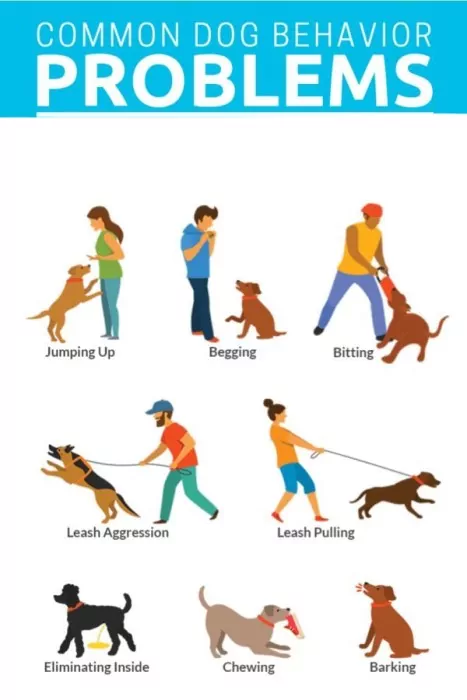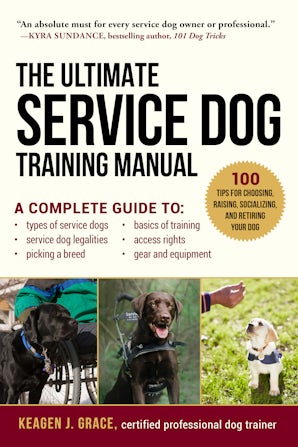Explore the Various Kinds of Canine Training Available for Your Furry Close Friend
Recognizing the different kinds of canine training is crucial for enhancing your canine buddy's habits and promoting a stronger bond. From basic obedience to sophisticated methods such as agility and scent work, each training approach supplies one-of-a-kind benefits customized to both the dog's and proprietor's demands. In addition, customized programs address details requirements, such as those for solution or treatment pets. As you consider the very best method for your fuzzy close friend, it becomes noticeable that the selection of training can considerably affect your common experiences and end results. What factors should you evaluate before devoting to a particular training style?
Standard Obedience Training
Fundamental obedience training lays the structure for a mannerly pet, setting the phase for a harmonious relationship between family pet and owner. This important training concentrates on training pet dogs essential commands such as rest, remain, come, down, and heel. These commands not just boost communication however additionally advertise safety in different settings.
The training procedure typically starts with favorable support strategies, where incentives such as treats or appreciation are offered when the canine effectively follows a command. This approach urges a favorable learning environment, eventually fostering trust between the owner and the pet. Consistency is vital; routine practice guarantees that the pet dog retains commands over time.
Additionally, standard obedience training helps to attend to usual behavioral issues, such as leaping, barking, or drawing on the leash. By developing clear boundaries and assumptions, proprietors can decrease undesirable behaviors and improve their dog's socialization skills.

Advanced Training Techniques
Advanced training techniques build upon the foundational abilities developed in standard obedience training, offering a path to enhance a pet dog's abilities and responsiveness. These techniques usually entail specialized skills and commands, enabling pets to do tasks that need higher levels of focus and intelligence.
One popular method is dexterity training, where pets browse challenge programs, improving their physical coordination and psychological sharpness. This not just gives workout however likewise strengthens the bond between dog and handler via team effort and communication.
One more innovative method is scent work, which take advantage of a pet's natural olfactory capabilities. This training urges pet dogs to determine and situate specific aromas, enhancing their focus and analytical skills. Such tasks can be specifically valuable for breeds inclined to monitoring.
Solution dog training is one more crucial area, where pet dogs discover to assist individuals with disabilities. This training calls for a high level of obedience and specialized abilities tailored to the details demands of their handlers.
Therapy Approaches
Effective canine training extends beyond instructing abilities and commands; it likewise incorporates therapy approaches that attend to unfavorable behaviors. These techniques are crucial for remedying issues such as aggressiveness, excessive barking, and splitting up anxiety, ensuring an unified partnership in between dogs and their proprietors.
One widely recognized method declares support, which includes rewarding wanted behaviors to motivate their reoccurrence. This method is effective in strengthening good behaviors while lessening worry or anxiety in the canine. Alternatively, aversive strategies, such as punishment or negative reinforcement, are typically inhibited by professionals due to their potential to develop worry and stress and anxiety, causing more behavioral problems.
An additional crucial method is desensitization, which gradually reveals canines to the stimuli that provoke unwanted behaviors in a controlled way. This process helps canines learn to continue to be tranquil and made up in scenarios that would usually trigger anxiousness or aggressiveness.
Counter-conditioning is often utilized along with desensitization, where the dog learns to associate favorable experiences with previously negative stimuli. Both techniques call for perseverance and consistency, making them effective devices for accomplishing long-lasting behavioral modification. By using these habits modification techniques, family pet owners can promote a well-adjusted and pleased canine companion.
Specialized Training Programs
In the realm of canine training, specialized training programs accommodate specific needs and objectives, offering customized techniques that enhance a pet dog's abilities and address unique difficulties. These programs are created for various objectives, consisting of service pet training, therapy dog prep work, and even affordable sporting activities training.
Solution pet dog training focuses on furnishing dogs with the abilities essential to aid individuals with impairments, such as directing aesthetically damaged proprietors or informing to clinical emergencies. This training is extensive and frequently calls for a combination of go obedience, socialization, and certain task-oriented skills.
Therapy dog programs aim to prepare pets for emotional assistance duties in healthcare facilities, institutions, and assisted living facility. These canines must display calmness, sociability, and a gentle behavior, guaranteeing they can provide convenience to those in distress.
Furthermore, affordable sports training, such as agility or obedience tests, stresses physical fitness, precision, and synergy in between the canine and trainer. These programs demand a high level of commitment and practice, promoting a solid bond while developing the dog's sports capabilities.
Enjoyable and Interactive Training Tasks
Exactly how can dog training be both satisfying and productive? The solution hinges on integrating enjoyable and interactive training activities that stimulate your dog's mind while reinforcing crucial abilities. Engaging your dog via play not only reinforces the bond between you and your fuzzy friend yet also boosts their discovering experience.
One reliable means to achieve this is with agility training, where canines browse barrier courses that challenge their psychological and physical capacities. This activity urges problem-solving and improves coordination, making it an outstanding choice for active types. Another choice is using challenge toys that give deals with, which can keep your pet dog emotionally involved and encouraged to find out.
Additionally, including games like fetch or hide-and-seek can make training sessions much more vibrant. These tasks urge the pet dog to respond to commands in a fun context, promoting obedience while permitting social communication.

Conclusion
Finally, numerous types of pet my explanation dog training are crucial for boosting canine actions and fostering a strong human-animal bond. Standard obedience offers as the structure, while advanced methods, therapy, and customized programs address certain needs. Involving activities further improve the training experience, ensuring that it remains pleasurable and helpful for both pets and their trainers. Exploring these diverse training options outfits canine owners with the tools needed to grow well-shaped, satisfied, and loyal companions.
Comprehending the numerous kinds of pet dog training is necessary for boosting your canine friend's habits and fostering a stronger more bond. From basic obedience to innovative techniques such as agility and aroma work, each training method supplies one-of-a-kind advantages customized to both the canine's and owner's demands.Standard obedience training lays the structure for a well-behaved dog, establishing the phase for a harmonious partnership in between animal and owner.The training process commonly starts with positive support techniques, where benefits such as treats or praise are offered when the pet efficiently adheres to a command.In conclusion, various kinds of pet training are essential for boosting canine actions and promoting a solid human-animal bond.